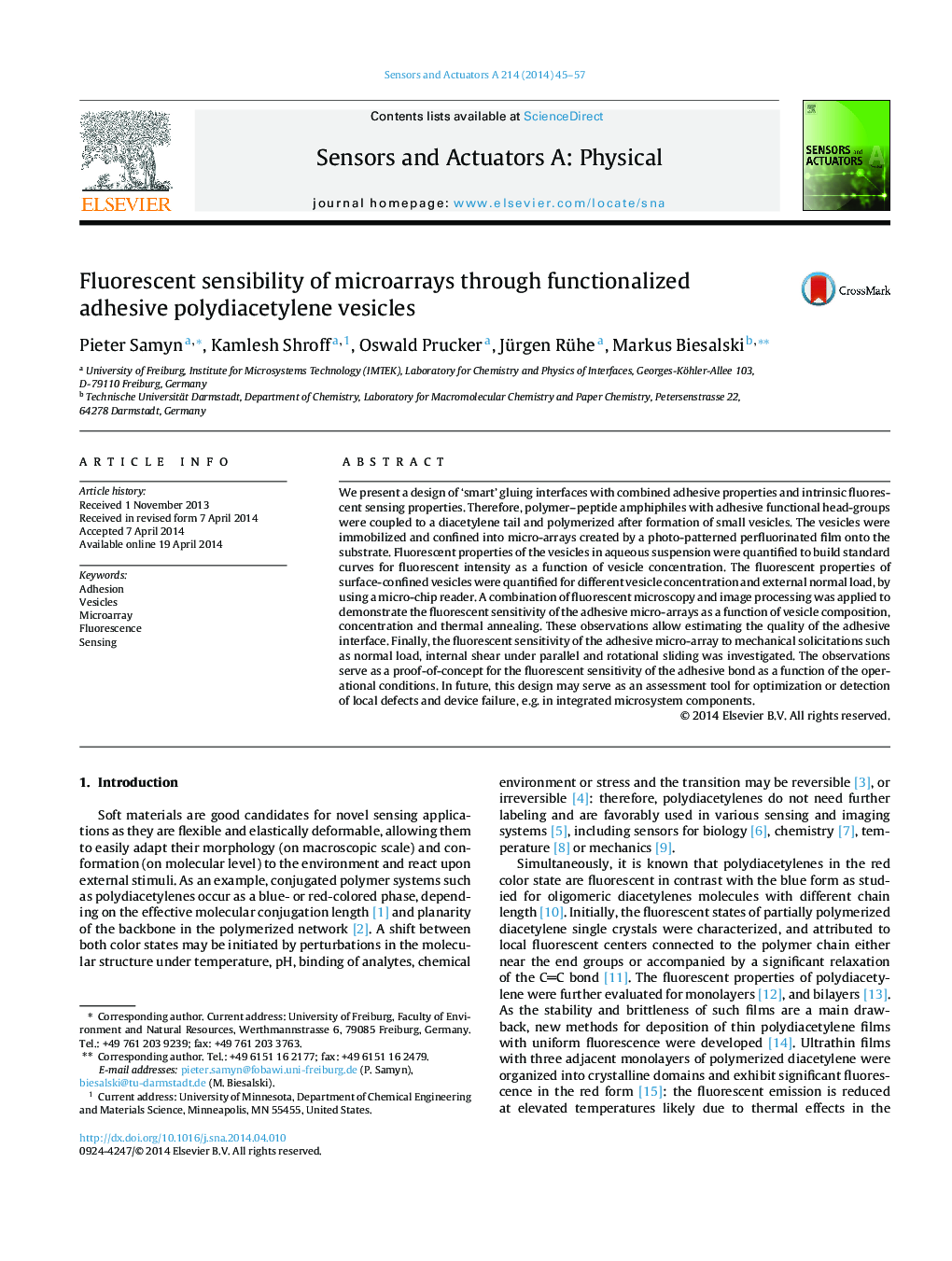| Article ID | Journal | Published Year | Pages | File Type |
|---|---|---|---|---|
| 739341 | Sensors and Actuators A: Physical | 2014 | 13 Pages |
•Polymer–peptide adhesive amphiphiles organized in vesicular structure.•Organization of adhesive vesicles in micropatterned arrays.•Fluorescent response of micro-arrays to vesicle composition, concentration and thermal curing.•Mechanical sensibility of microarrays to shear and normal loads.
We present a design of ‘smart’ gluing interfaces with combined adhesive properties and intrinsic fluorescent sensing properties. Therefore, polymer–peptide amphiphiles with adhesive functional head-groups were coupled to a diacetylene tail and polymerized after formation of small vesicles. The vesicles were immobilized and confined into micro-arrays created by a photo-patterned perfluorinated film onto the substrate. Fluorescent properties of the vesicles in aqueous suspension were quantified to build standard curves for fluorescent intensity as a function of vesicle concentration. The fluorescent properties of surface-confined vesicles were quantified for different vesicle concentration and external normal load, by using a micro-chip reader. A combination of fluorescent microscopy and image processing was applied to demonstrate the fluorescent sensitivity of the adhesive micro-arrays as a function of vesicle composition, concentration and thermal annealing. These observations allow estimating the quality of the adhesive interface. Finally, the fluorescent sensitivity of the adhesive micro-array to mechanical solicitations such as normal load, internal shear under parallel and rotational sliding was investigated. The observations serve as a proof-of-concept for the fluorescent sensitivity of the adhesive bond as a function of the operational conditions. In future, this design may serve as an assessment tool for optimization or detection of local defects and device failure, e.g. in integrated microsystem components.
